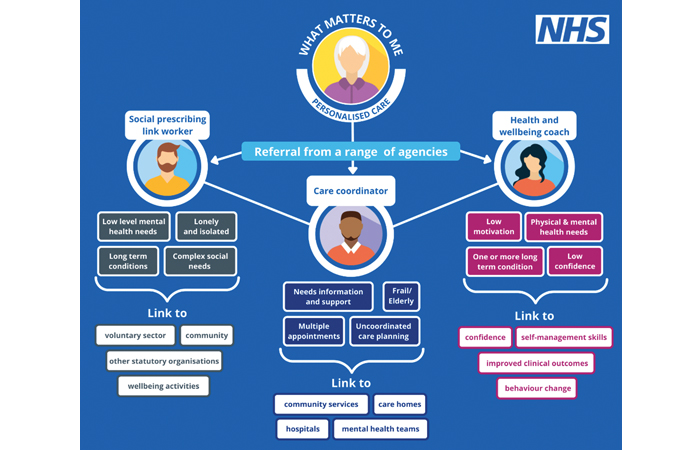How does it work?
In practice, the social prescribing link worker receives an initial referral. Most originate from medical routes (e.g. GPs and other NHS services), but they can be made by almost anyone, from local authorities and VCSE organisations to job centres and social care services. Self-referral is possible in some areas.
There will then be a face-to-face session, at the person’s home, lasting at least an hour.
The social prescribing link worker will establish what is important to the person by initiating a person-centred conversation based around asking ‘What matters to you?’ using the model of personalised care.
A personalised care and support plan will then be designed to cover what the person wants to achieve and how.
The social prescribing link worker will work with the person over several sessions (typically six to 12 sessions over a three-month period), and if the person feels they need more support after this, they can re-refer themselves back into the system.
For each link worker, a caseload of 200-250 people per annum is recommended, with one in five having a caseload of more than 300.
A 2025 survey from the National Academy of Social Prescribing found the most common social prescribing link worker actions were linking people with information and advice services, healthcare services, or age-related (e.g. Age UK or youth groups) and physical activities.
Depending on the needs of the patient, the link worker may signpost them to a care co-ordinator or health and wellbeing coach (see Figure 3).

